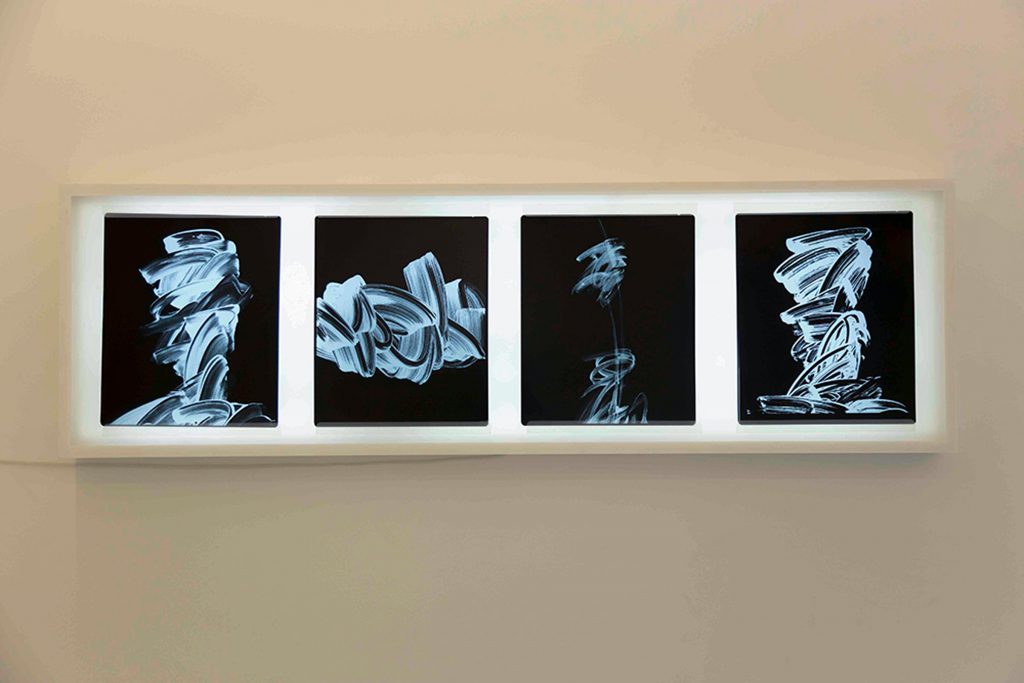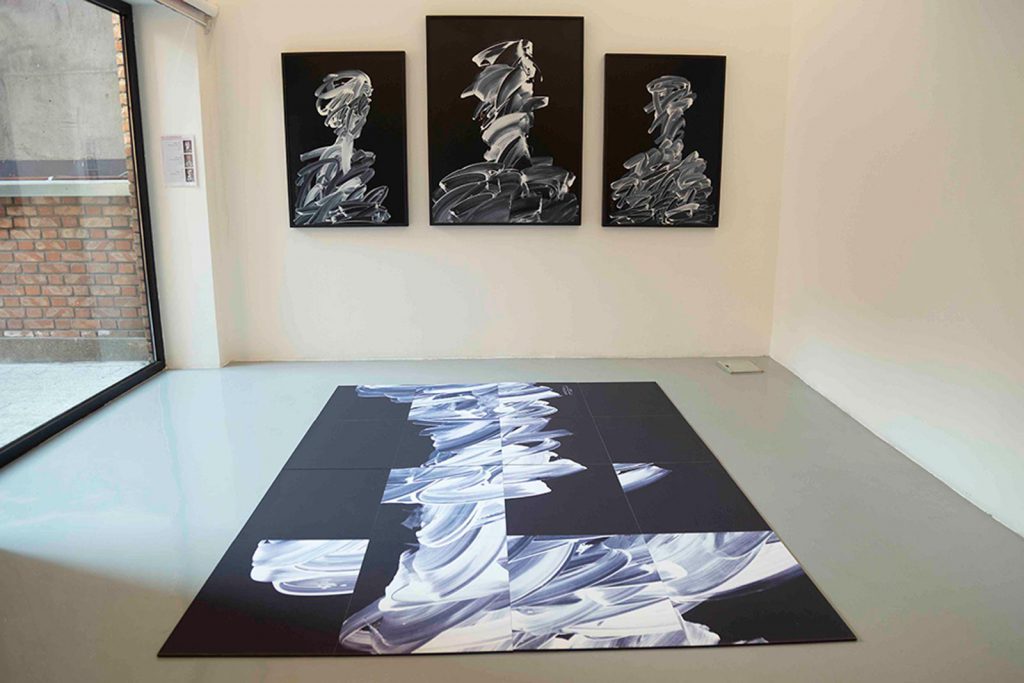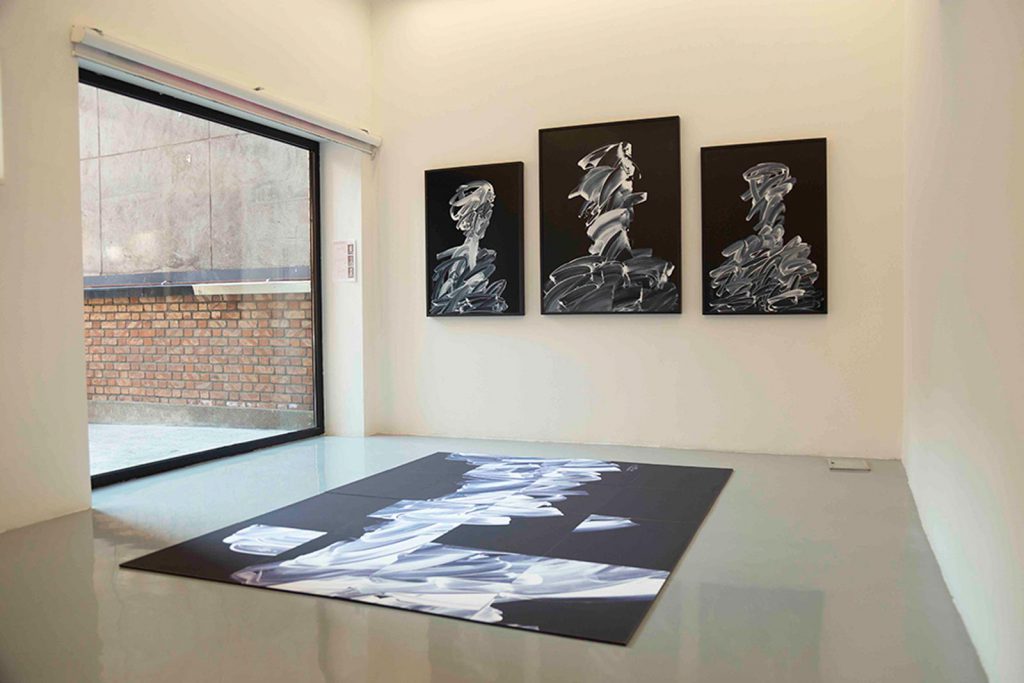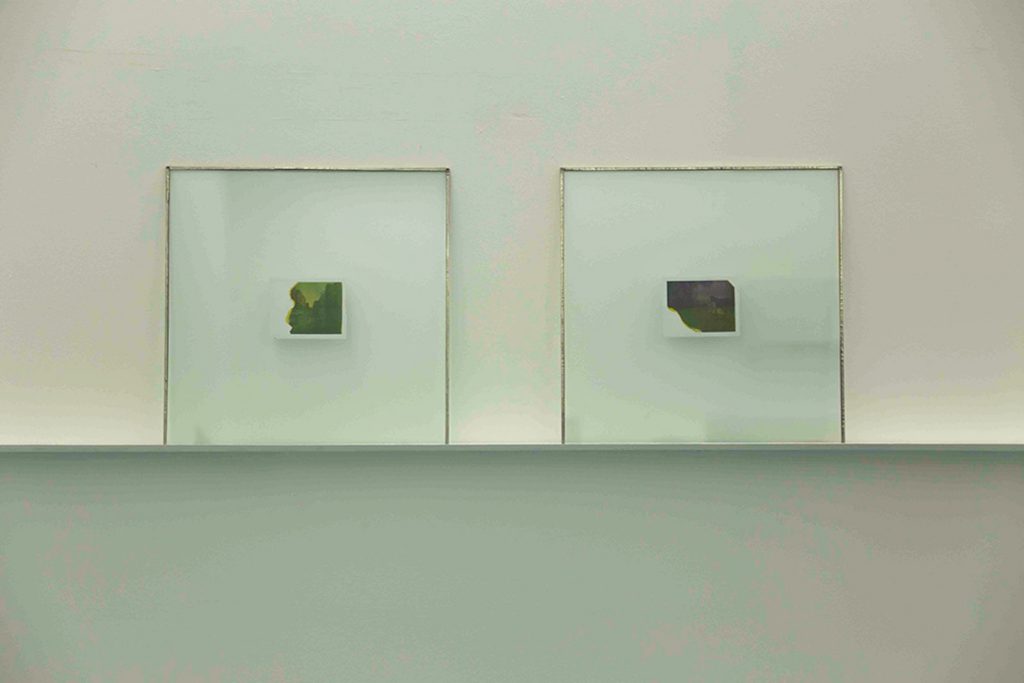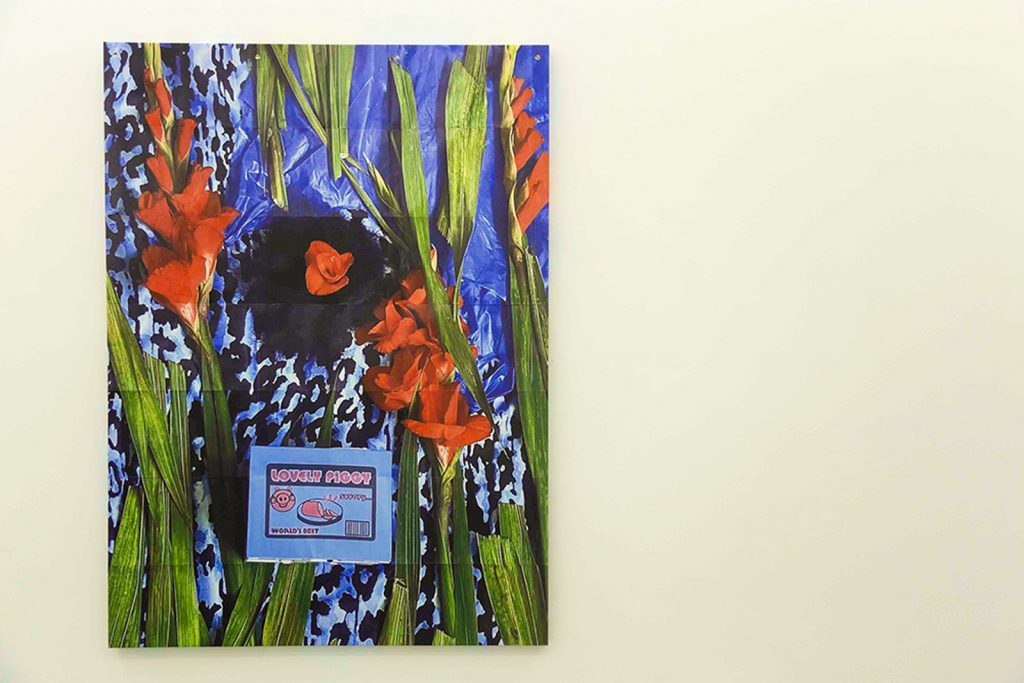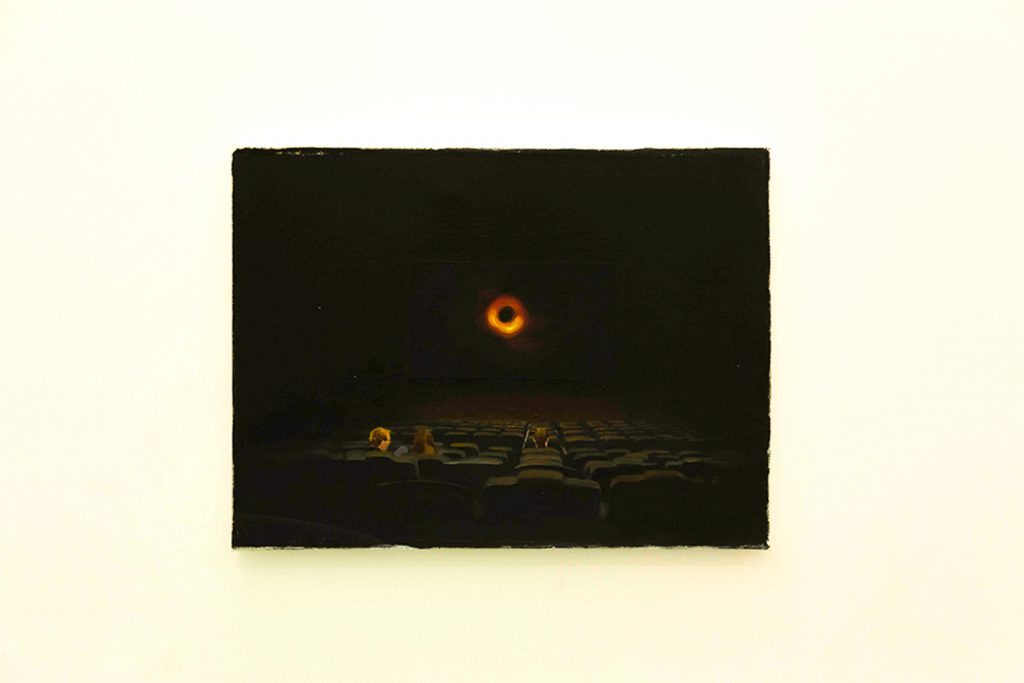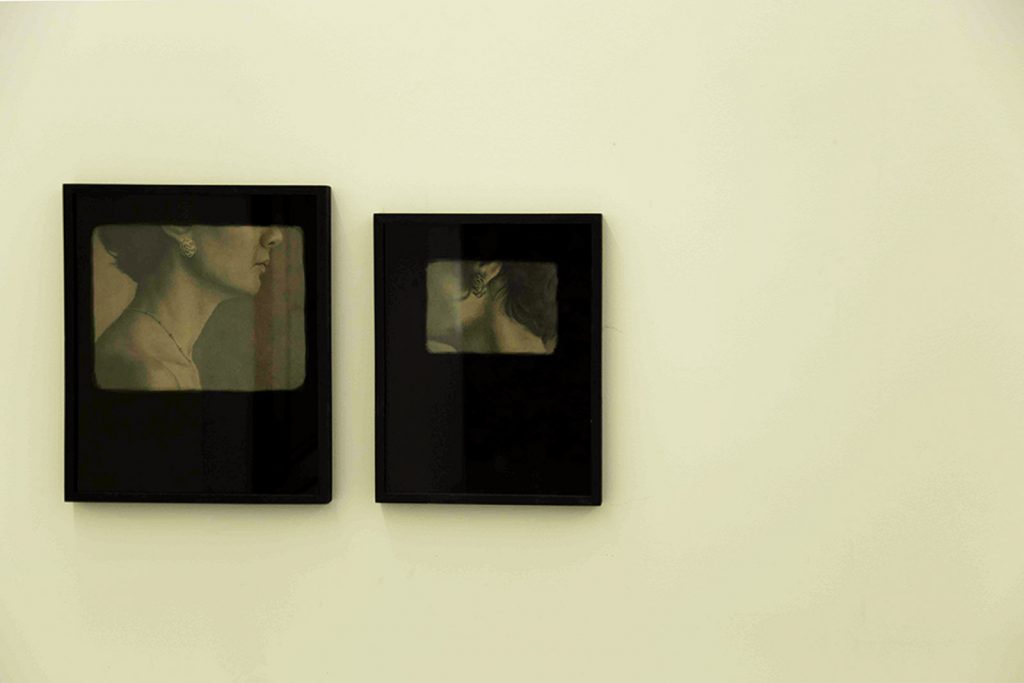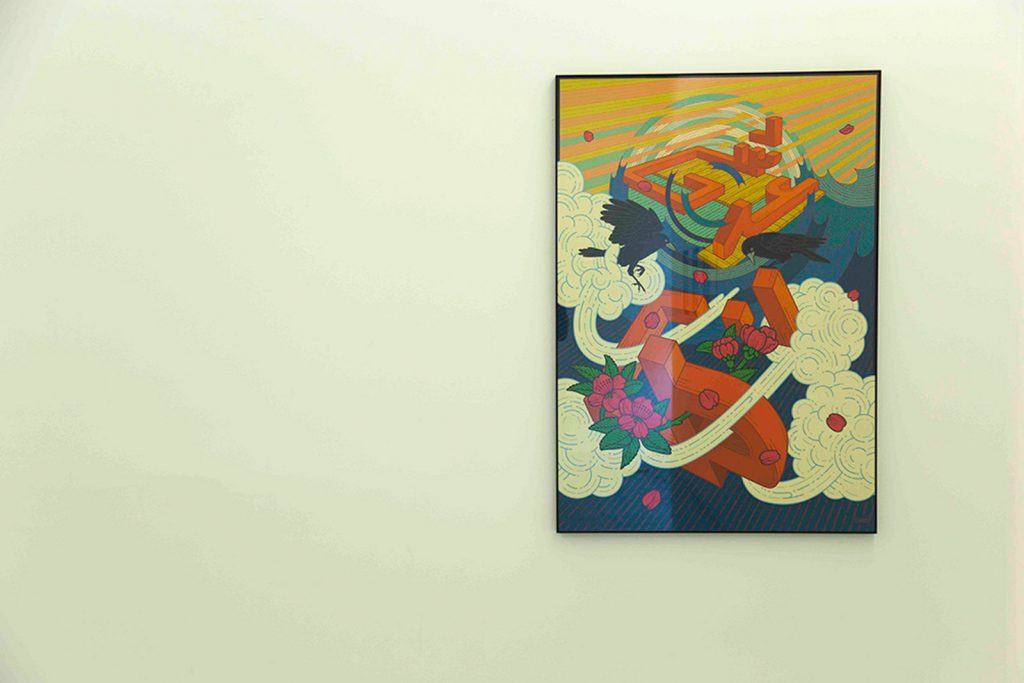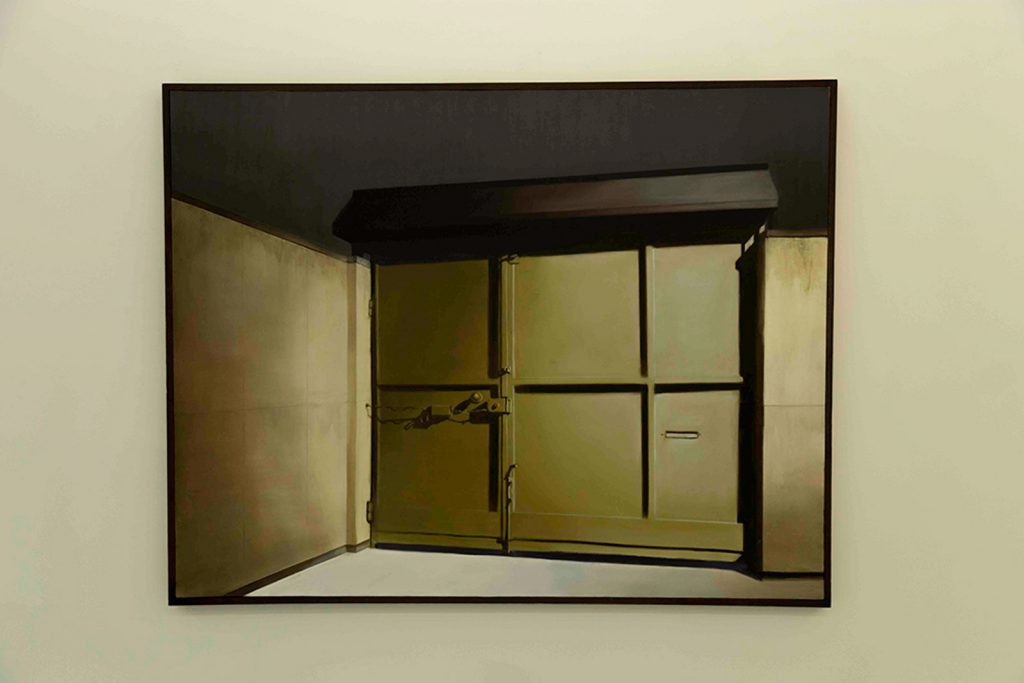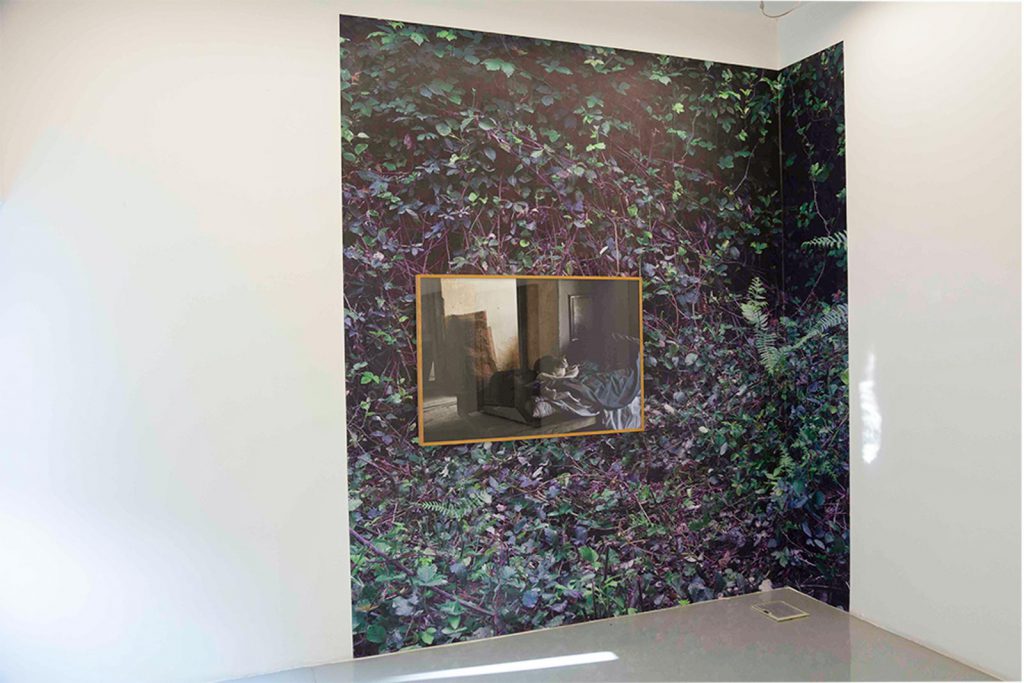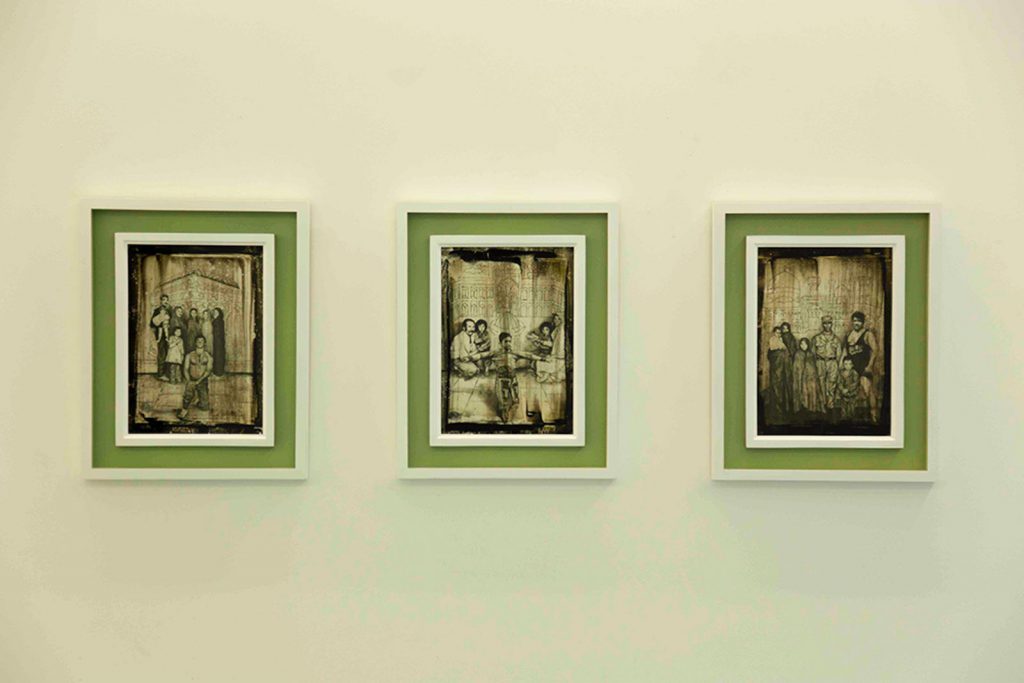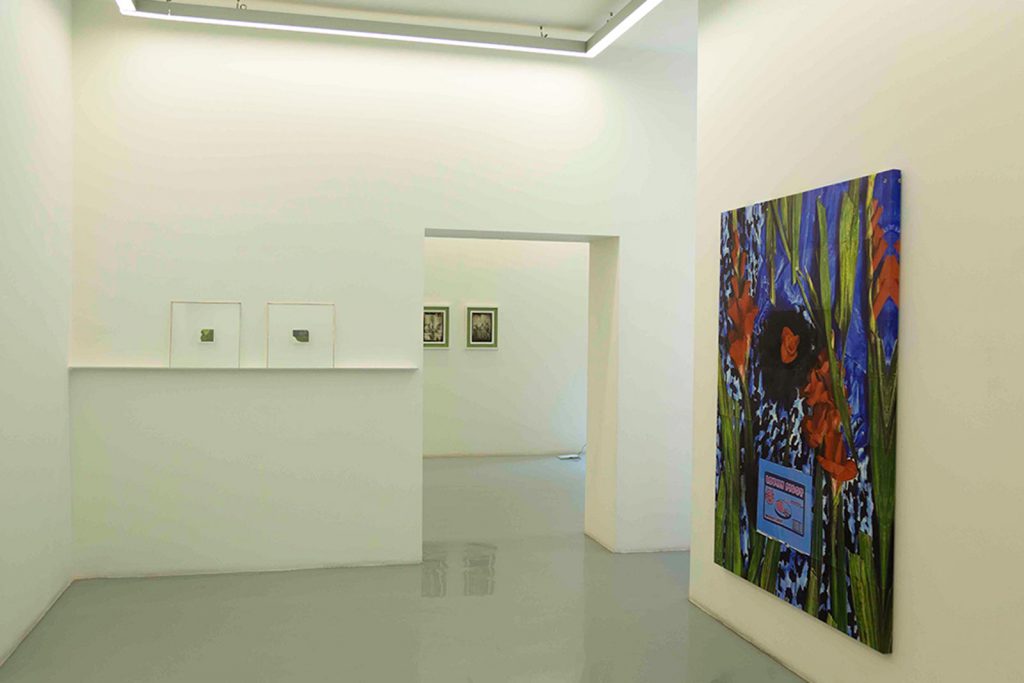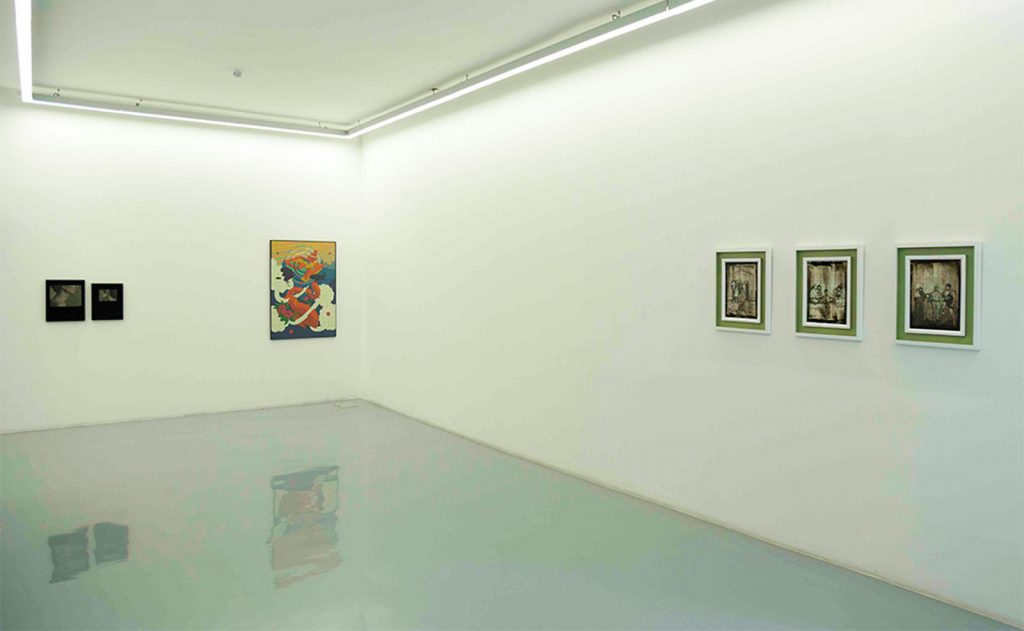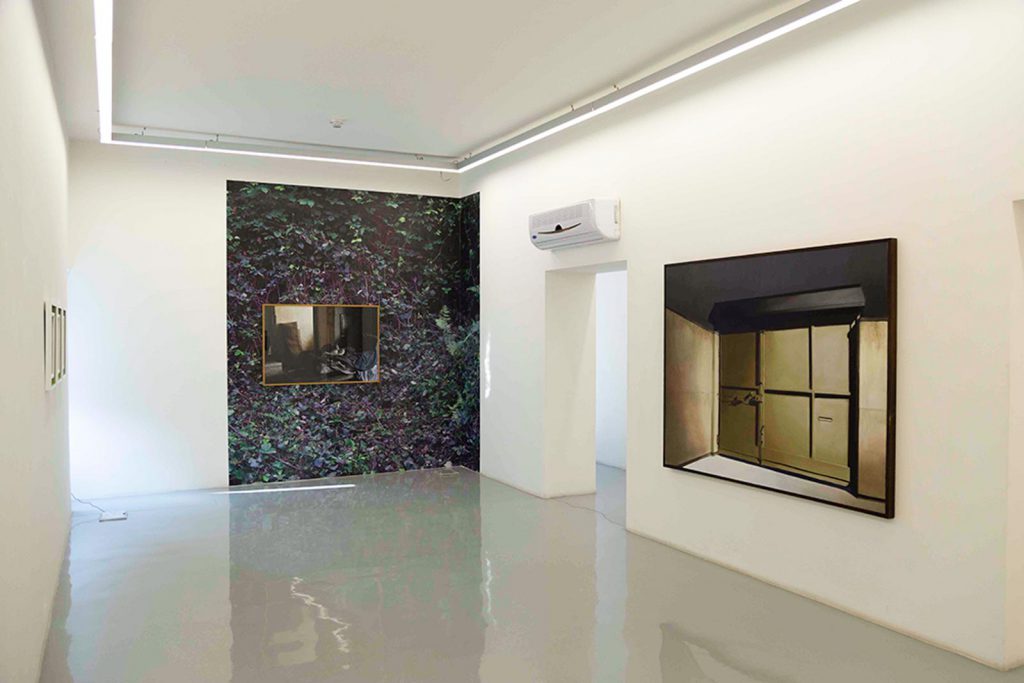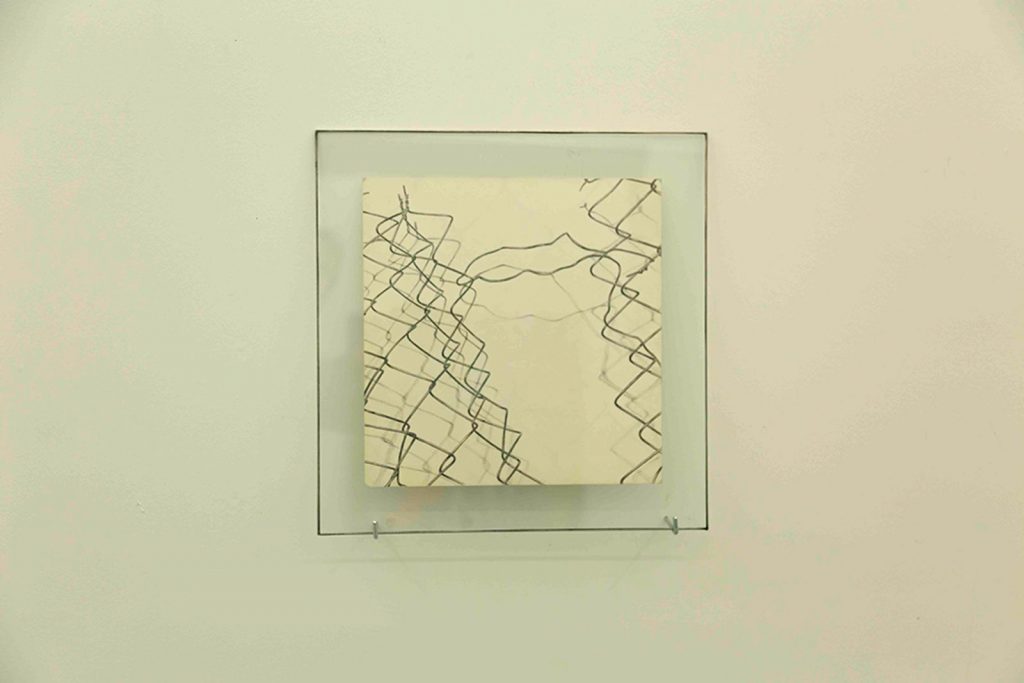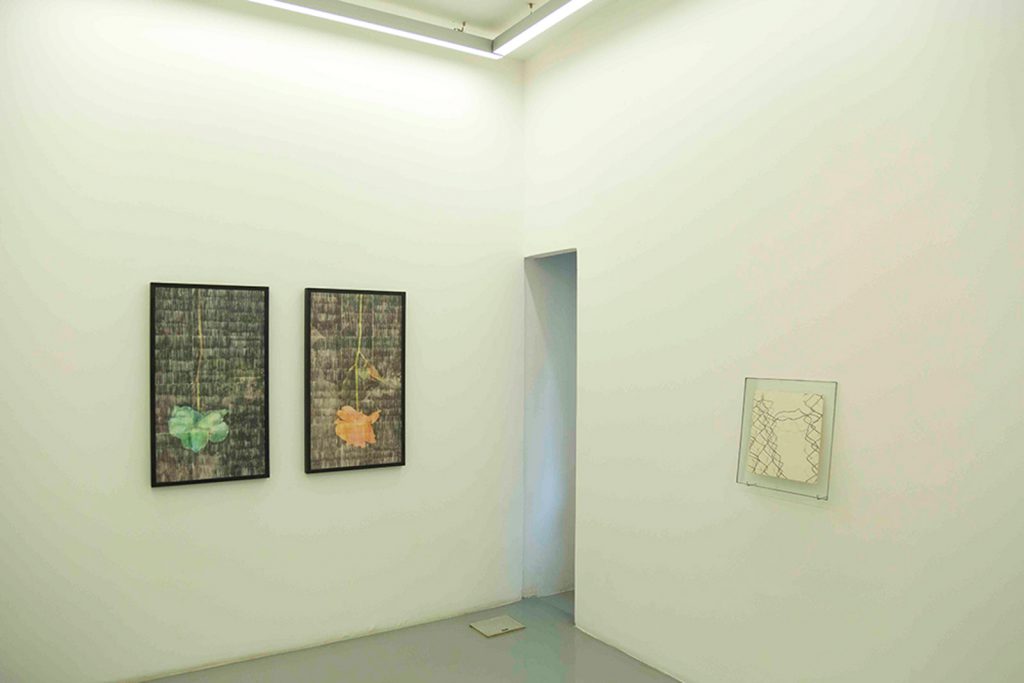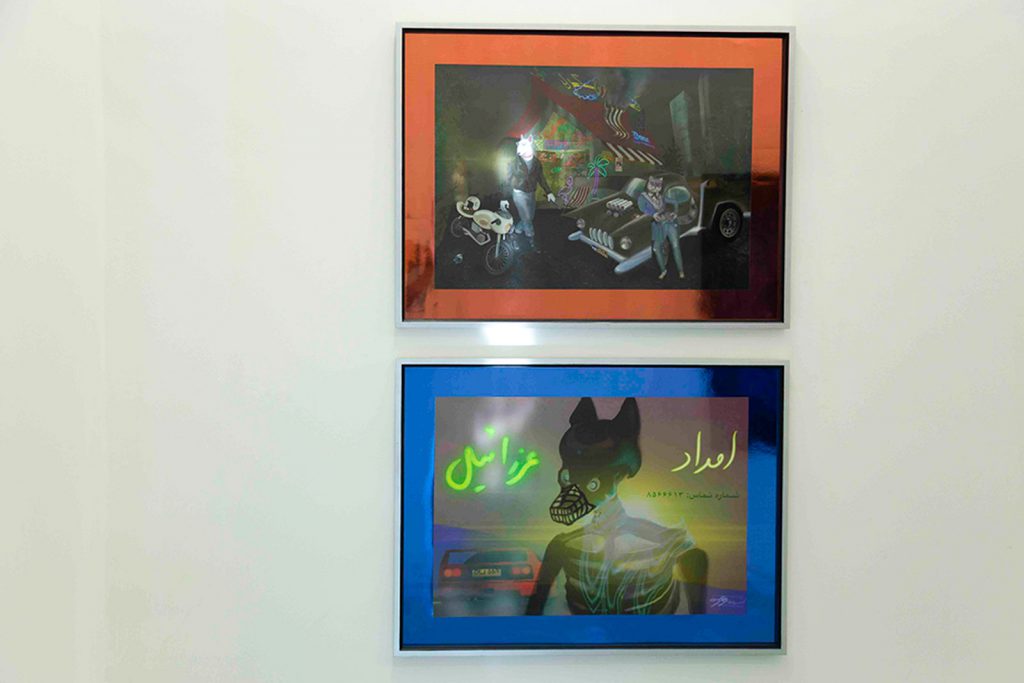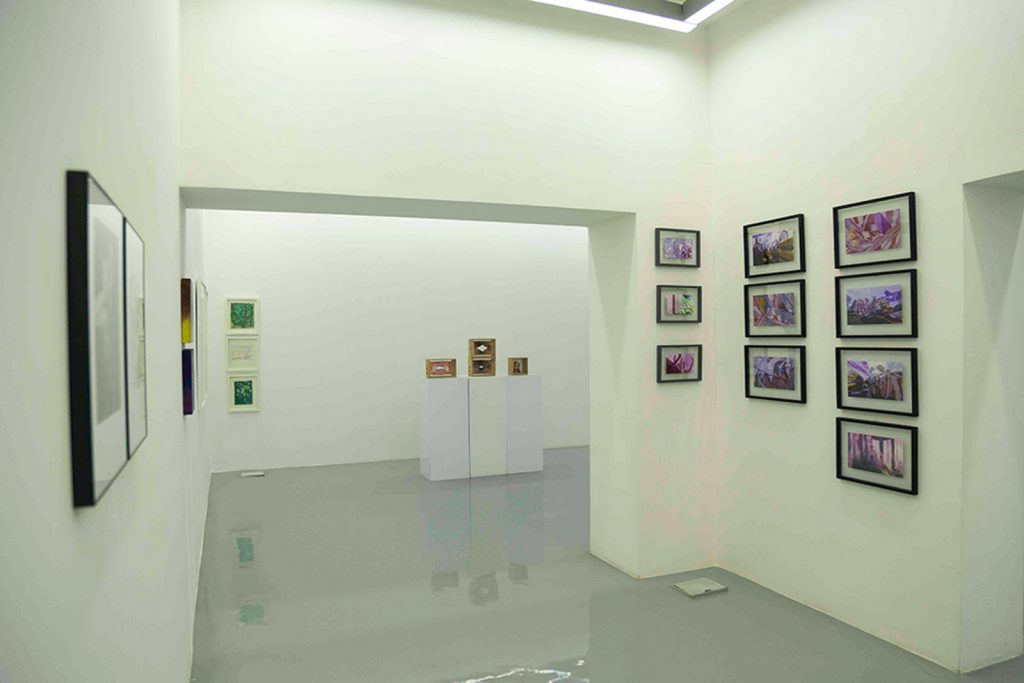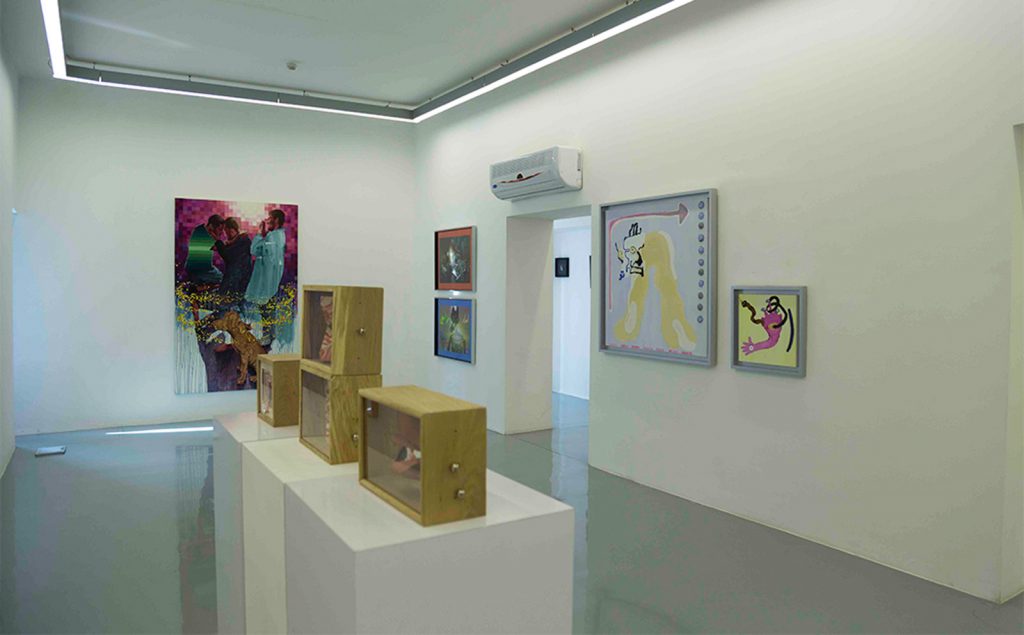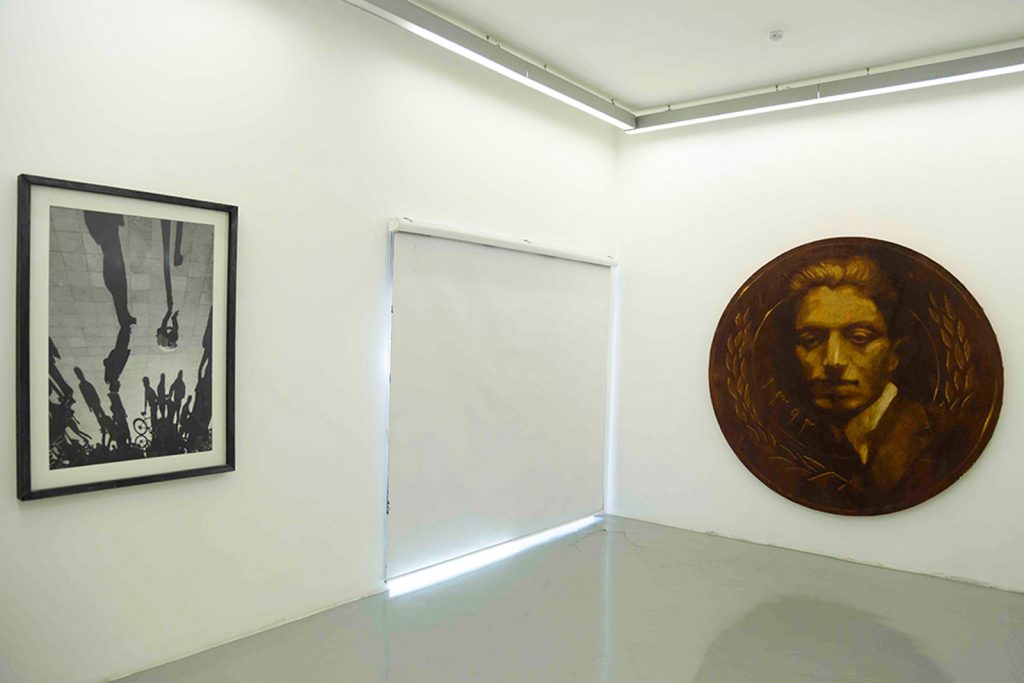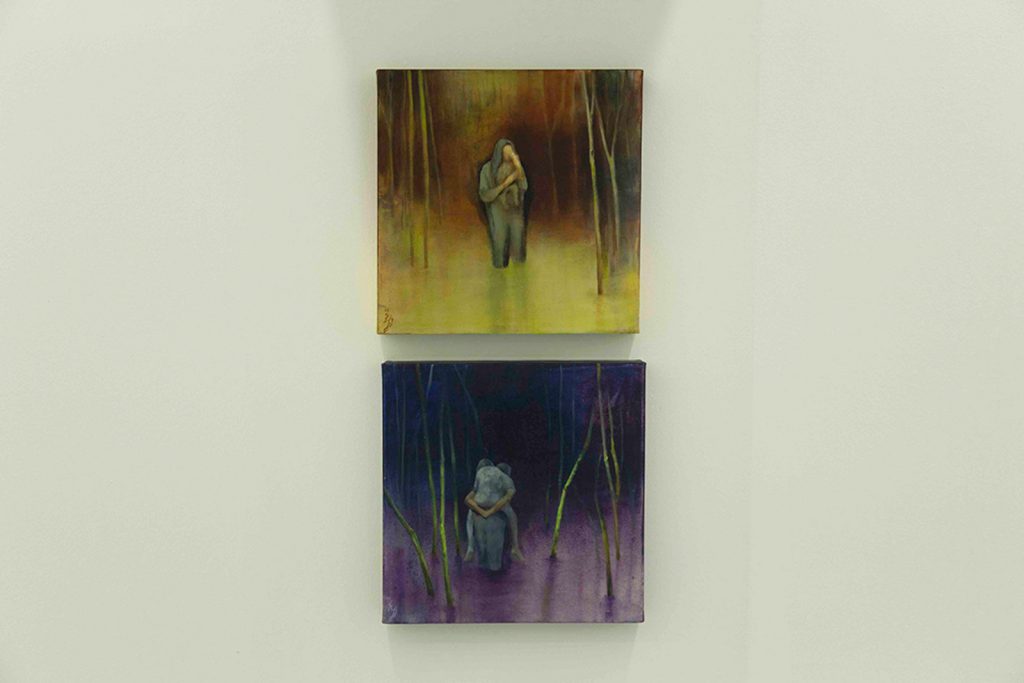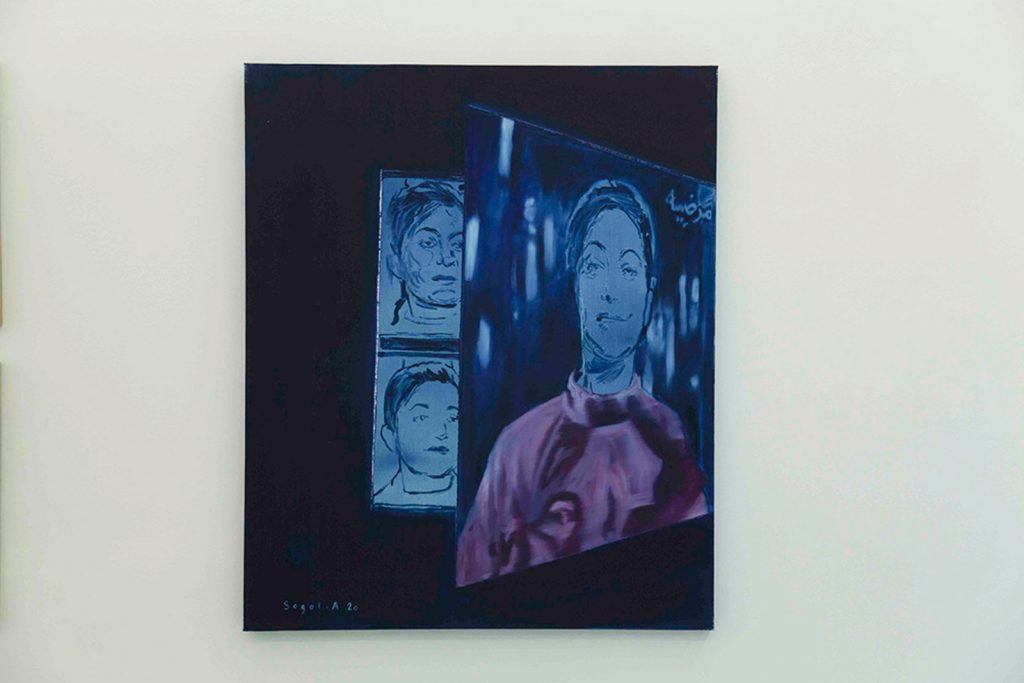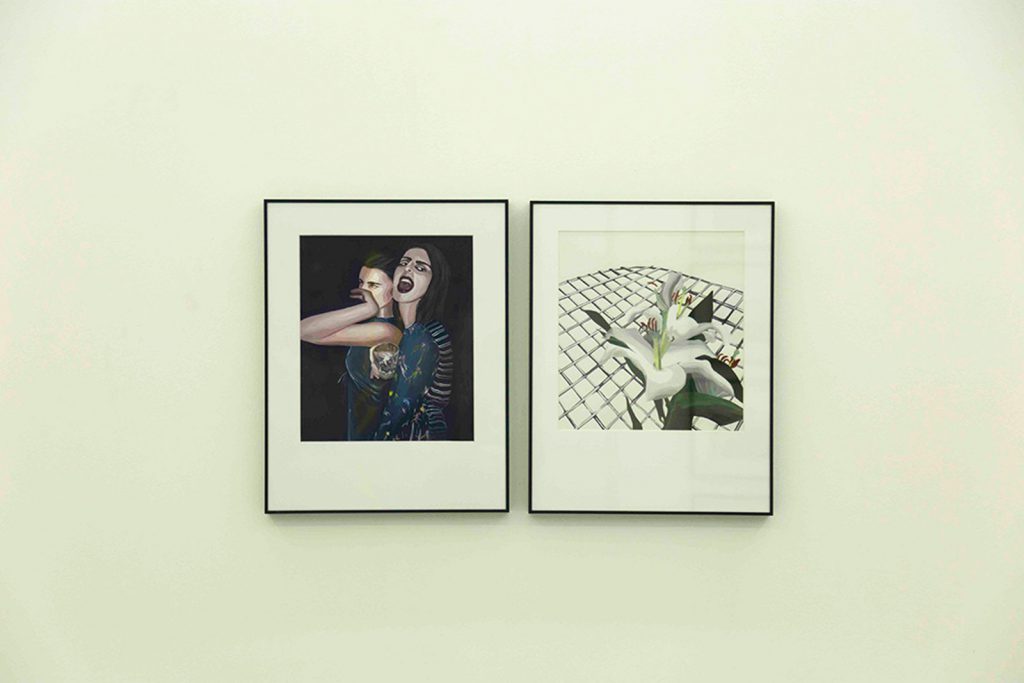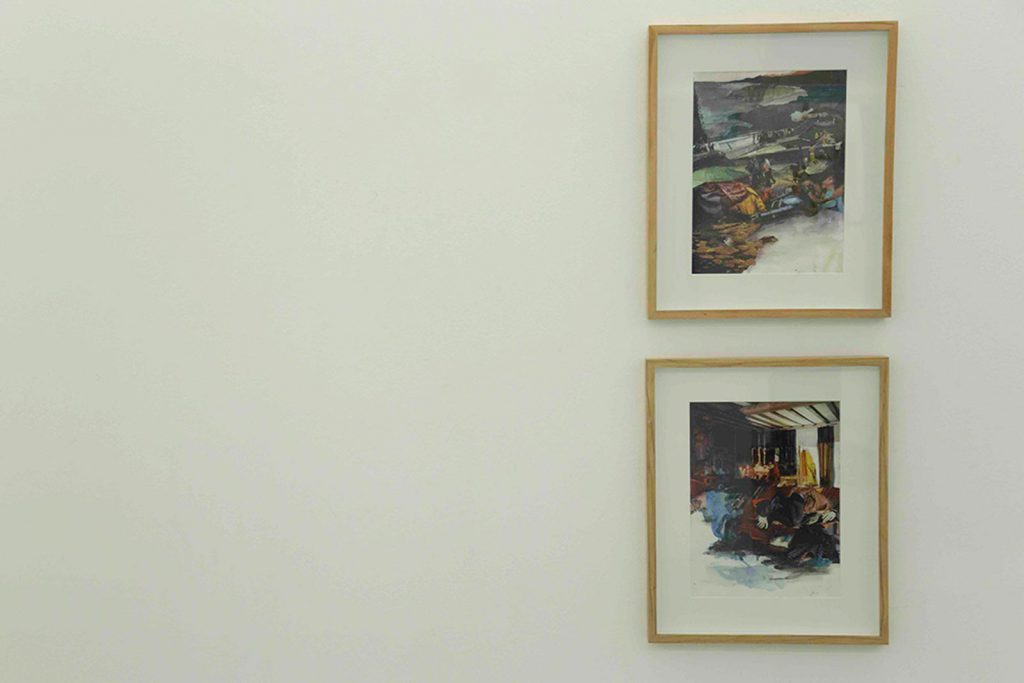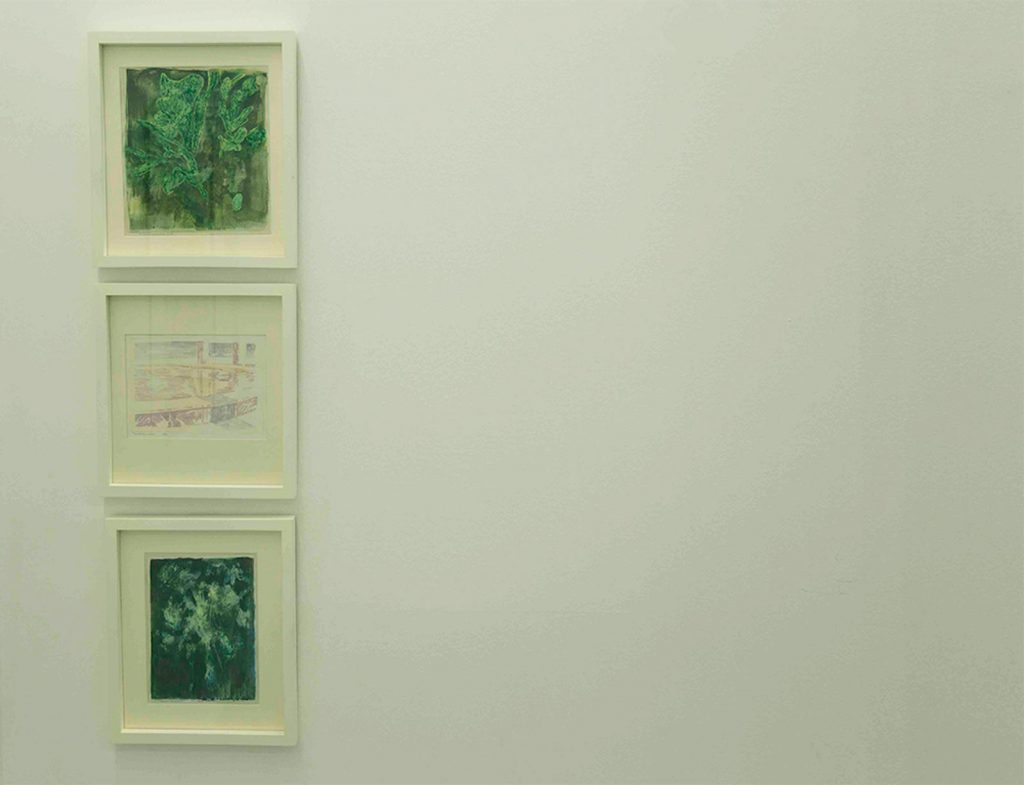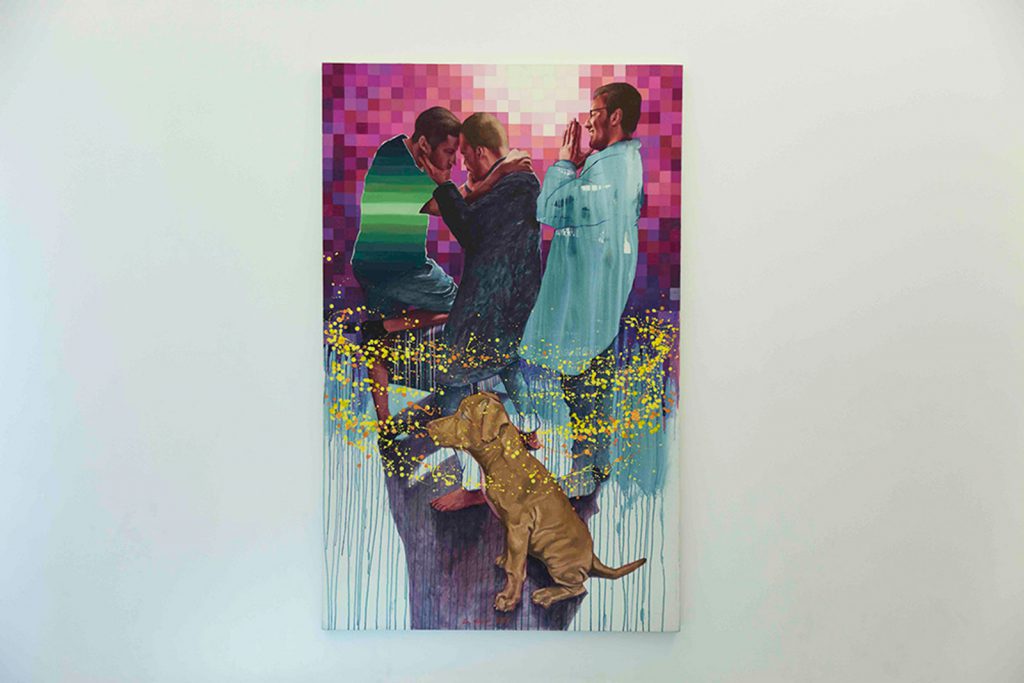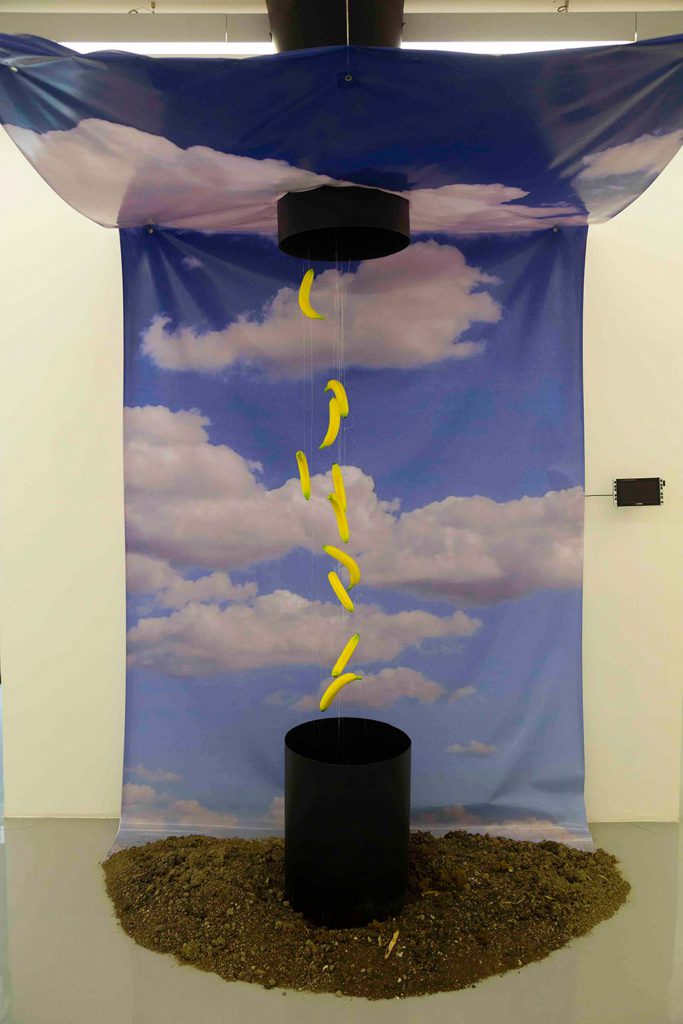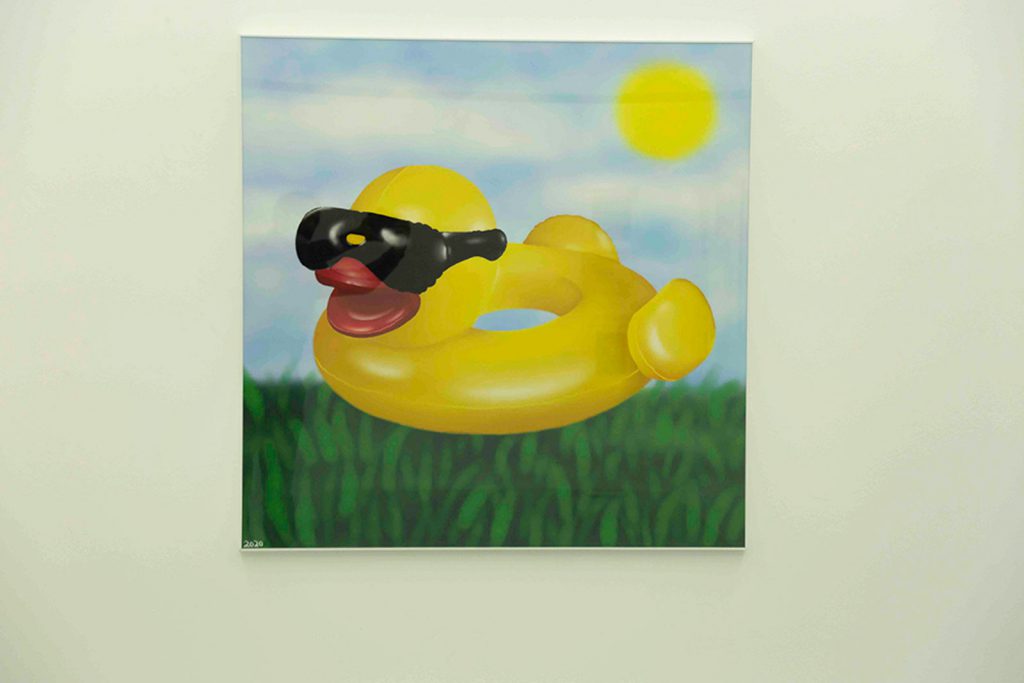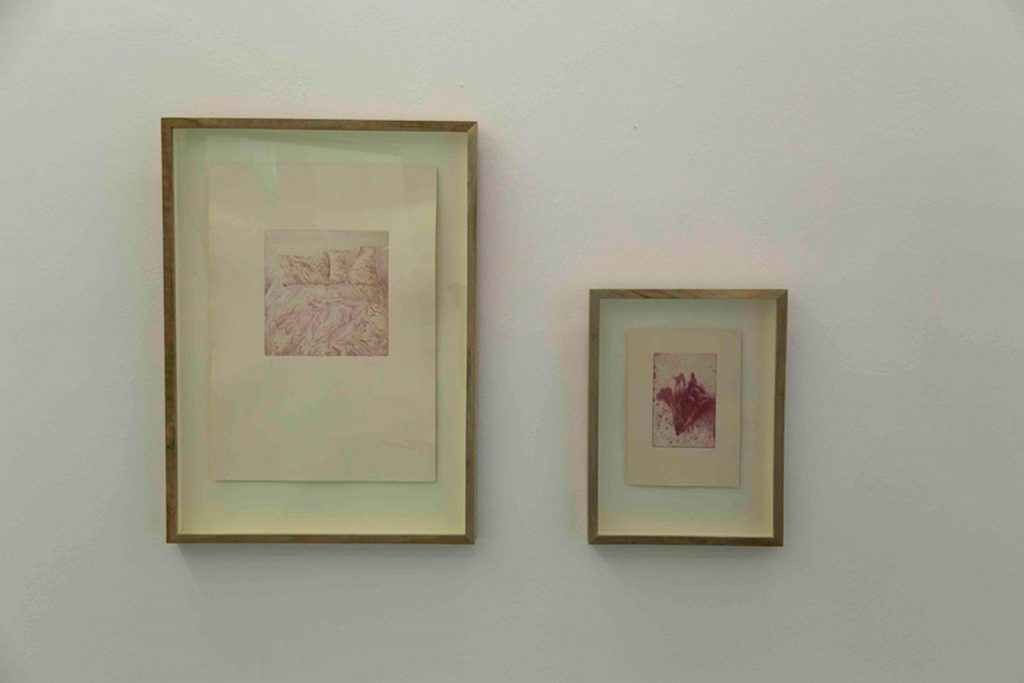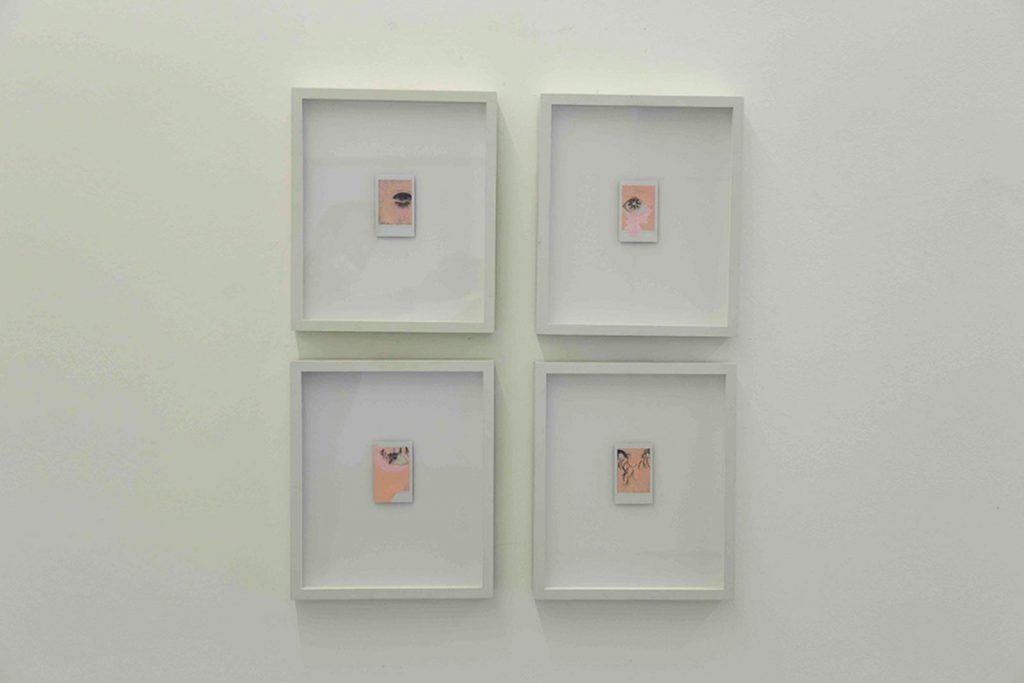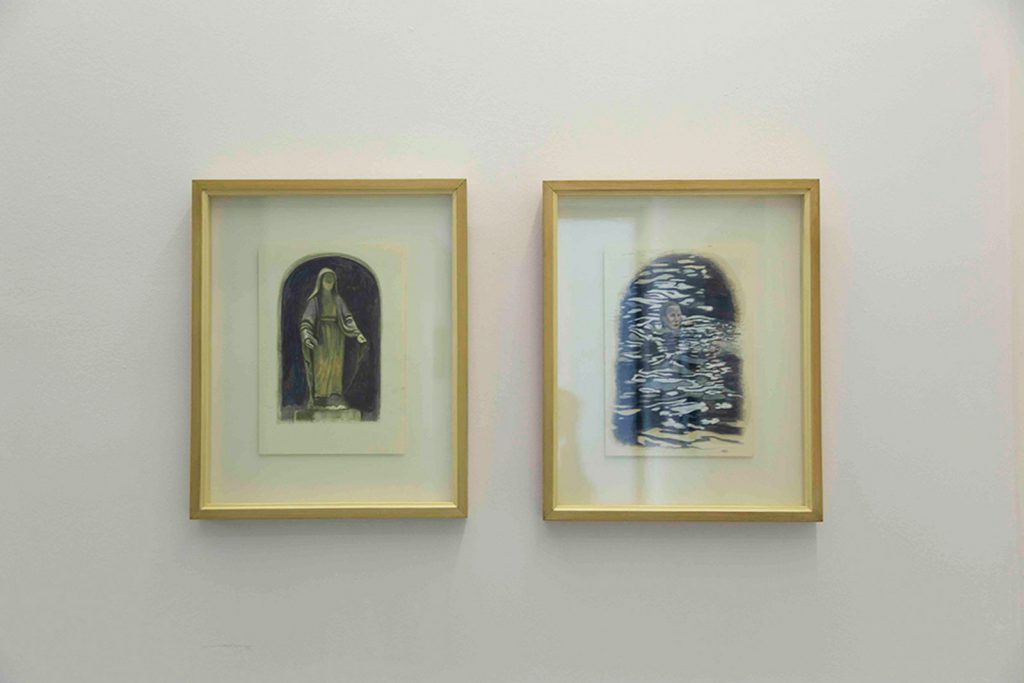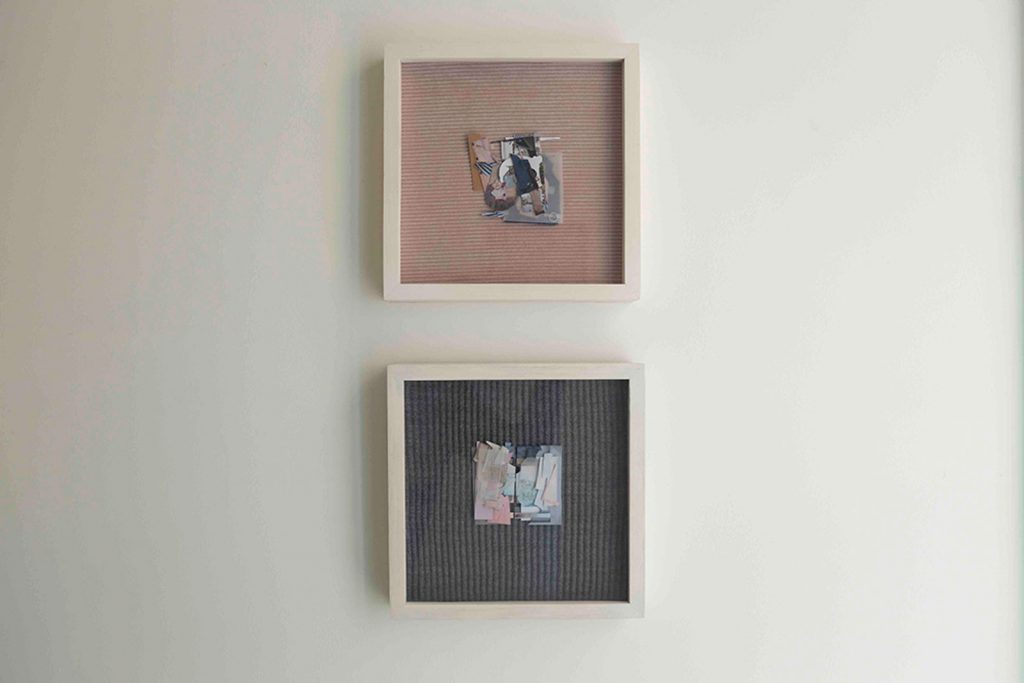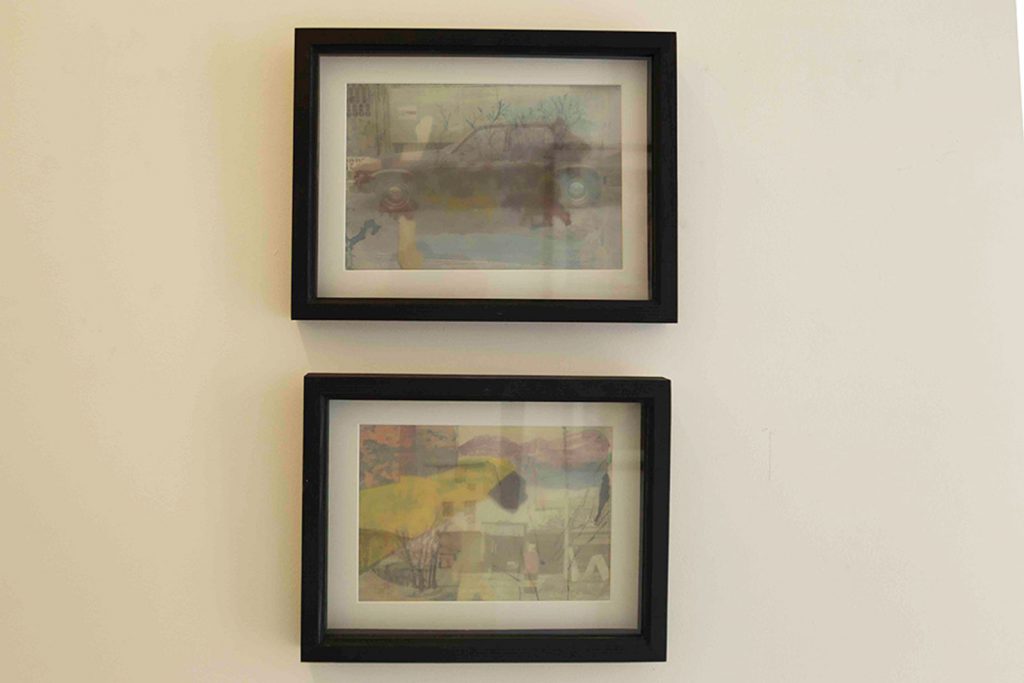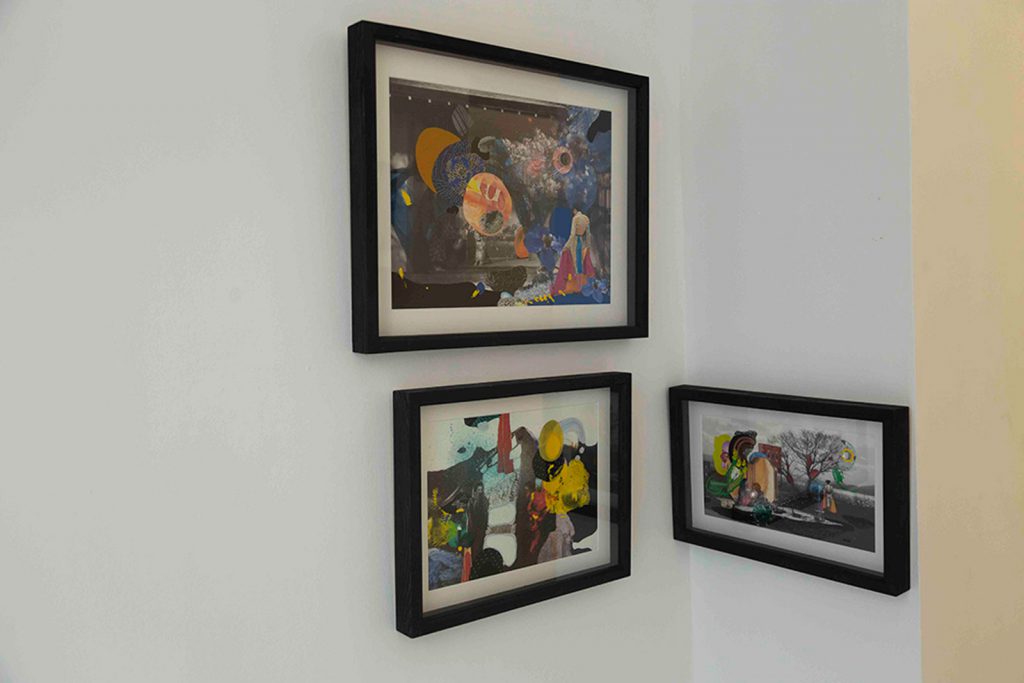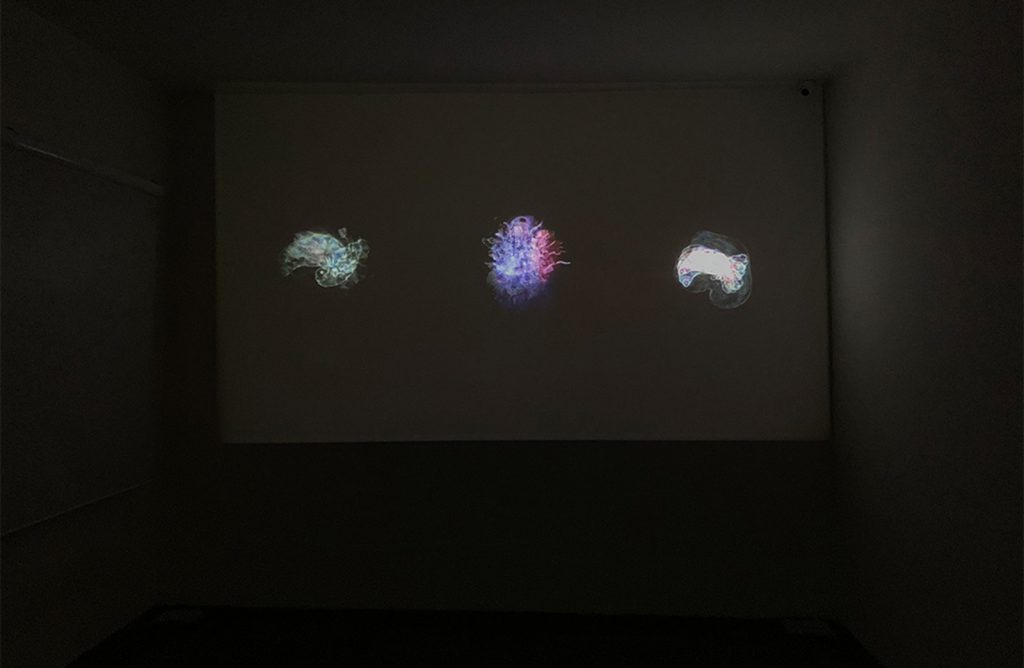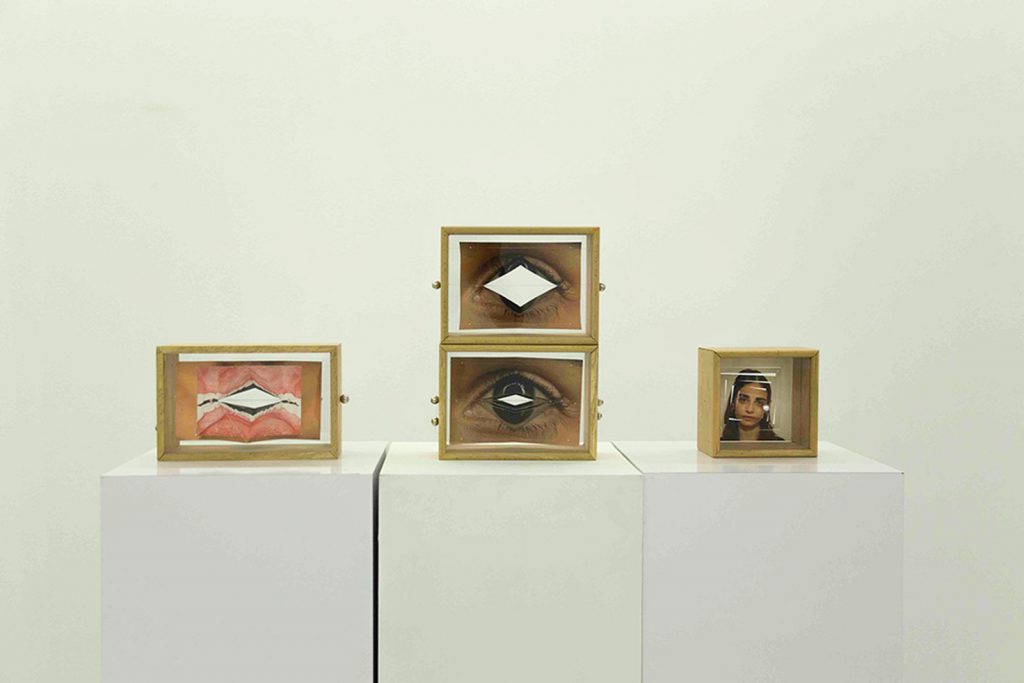Photogenic
Group Exhibition
11 – 29 December, 2020.
Curator: Shirin Gharavisky
As in the past there used to be a discussion about the mutual impact of the model and painting on each other, invariably from a particular period on a debate between photograph and painting and the correspondence between their elements was born. In pop culture, the word photogenic refers to a subject with glowing face when photographed. Though originally, it refers to anything provoking the inclination to be sketched or registered.
The recent exhibition, by such standards, encompasses examples of mutual and multi-aspect impacts resulting from artists’ use of painting media, photography and film. These effects reflect in the artists’ view from one part and in their register, style, and technics from another; in a way that the penetrations of the flows and even basic notions of other media are clearly seen in the theme, material and the artists works’ discourse.
Over the course of collecting such art works, some artists on one hand, have recounted their contemporary subjects as a witness/narrator, and some on the other hand, through diverse technics and working on photographed picture or realizing the performance and recording the event, have retouched the events and consequently created the narrative. As such, we are dealing with works that performance technics aside, prevail some resemblance between present, past and the deed of the painting. To study these perceptual procedures, represents neither a substitute for history, nor a comparison of eras, but could be to make do with the present time and confront with actual circumstances.
Shirin Gharavisky/ SooContemporary2020

Koorosh Shishegaran 


Mohammad Ghazali 
Melika Shafahi 
Shantia Zakerameli 
Leily Rashidiraoof 
Homa Delvaray 
Pooya Razi 
Raoof Dashti 
Mohammad Pourhosseini 



Peyman Shafieezade 
Sasan Abri 

Shameel Basiri 




Raziye Iranpour 
Sogol Ahadi 
Niki Fallahfar 
Mahsa Tehrani 
Sahar Kheitan 
Ghazal Marvi 
Nazanin Aharipour 
Terme Ziaee 
Khazhal Fakhri 
Mona Janmohammadi 
Amir Karimi 
Sara Sadodin 
Afroz Vadodi 

Golnaz Behrouznia,Maxim Corbeil-Perron,Remi Boulnois 
Parnian Ghorbani 
Ghazal Majidi
Artists:
Sasan Abri, Morteza Pourhosseini, Homa Delvaray, Raoof Dashti, Shantia Ameli, PooyaRazi, Leili Rahidiraof, Melika Shafahi, Peyman Shafieezade, Kourosh Shishegaran, Mohammad Ghazali, Parnian Ghorbani, Daryoush Nehdaran, Dana Nehdaran, Sogol Ahadi, Nazanin Aharipour, Razie Iranpour, Shameel Basiri, Mona Janmohammadi, Ahoo Hamedi, Sahar Kheitan, Sara Sadodin, Paniz Sohrabi,Terme Ziaee, Mahsa Tehrani, Kazhal Fakhri, Niki Falahfar, Amir Karimi, Ghazal Marvi, Afroz Vadodi, Ghazal Majidi, Golnaz Behroznia, Maxim Corbeil-Perron, Remi Boulnois.
Press Release:
It is no less important than first priority to mention there is no need for the word photogenic to be translated. For this term has been explained and developed in West, so why not letting it be digested the way it is? In such cases, the substantive word is to be less controversial. In the course of history, things and notions have been produced abundantly that have proved to be much more effective and developable than first met the eye. The concept of “photogenic painting” is one of those. Michel Foucault used the term “photogenic painting” when he saw fair sprinkles of the technological presence of photography in his days’ painting, but prompted into the birth of a notion which existed before Foucault and is to continue to do so forever. A fierce battle between photography and painting began once the former was born. So many painters got hastily attacked by the fear of the death of their career, as well as those who perceived to be plagued by a formidable adversary in registering images. Some equipped themselves with the innate characteristics of color as to prove their superiority. It all passed; all the turmoil was mitigated by time. Artists, critics and audience fathomed the fundamental differences between photography and painting, if anything, those two elements became adjutant moving artistic creation forward.
David Hockney might be the most resentful living painter from photography. He has not managed to cope with the perspective in photography. But this challenge of his with photography has led to the creation of sophisticated works which are photography-oriented, far from mere photography and eventually photogenic. This time though, not a photogenic painting, but art! In the works of Michelangelo Merisi da Caravaggio and many of his predecessors, dark room served as a tool. Dark room used to be an ostensible means of photo transition in its time and the transition of the corps of a sketch with its help, is defined as using the modern technology oriented by photography in painting. In retrospect, looking at Iranian painting during the Qajar era, beside the eminent presence of photography in Nasseri Court, diving deep down the works of Mahmoud Saba, considering the extent of the surfaces, simplification of form twists, him not being an academician of painting courses and seeing pictures similar in structure to those of Mahmoud Saba in Royal album house, we realize that marvelous works of Mahmoud Saba have been created under the influence of photography. Hence, the works of Mahmoud Saba could be recognized as the very first samples of photogenic painting in Iran. The truth is that generally thinking, image transition tradecrafts have opened the path for technology for a long time. But silence ruled the matter up until the late 20thcentury; The second half of the century was a renaissance of obvious recourse to photography in painting. Today, things have changed, though, Cameras, lenses, artificial lights, printers, scanners and all software apparatus is at visual artists’ service to help them present their ultimate work, through advanced photographic tools, while indicating this technology-oriented encounter in their speech.
Occasionally, photogenic painting is attributed to works where light has been the mere focus. In fact, the work has a photogenic concept and not form or sketches with the light present. What’s apparent, generally, photogenic art is being developed in a way that like many other notions in contemporary art, the linear meaning of it is not feasible. But embraces a wholesome of tradecrafts and concept-oriented affairs which take somewhat intuition; In one way or another, the photogenic art world is widening day after day.
